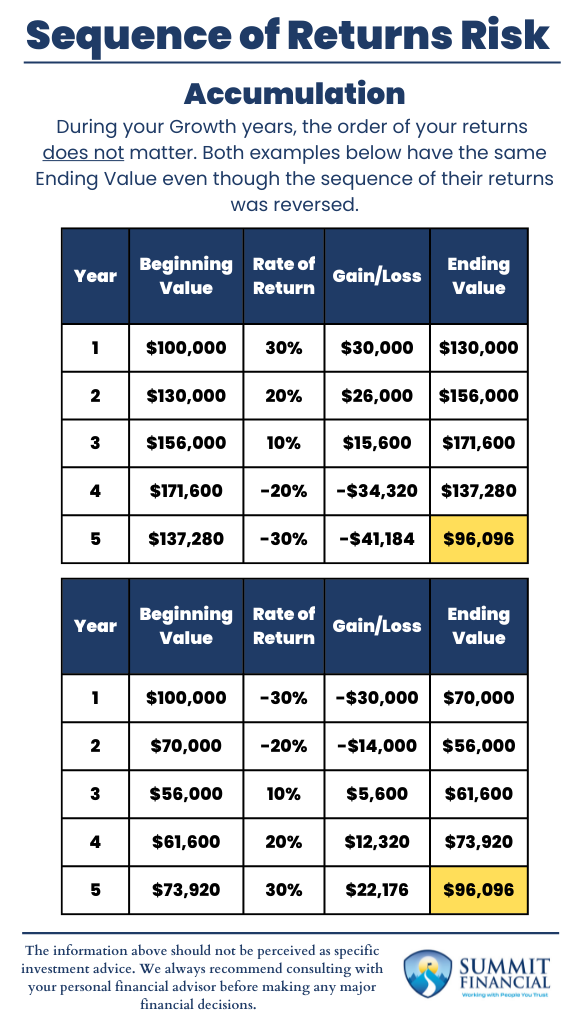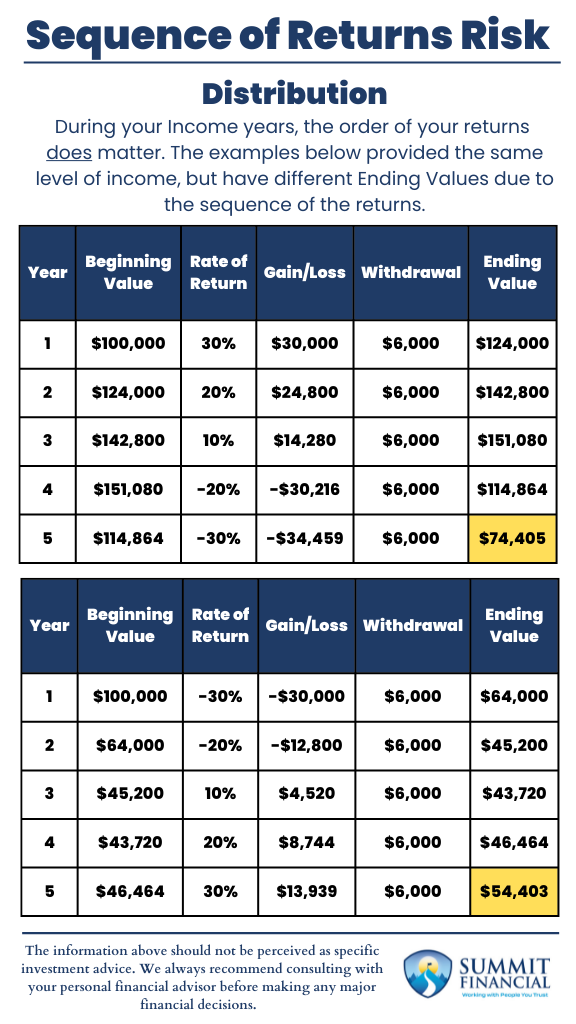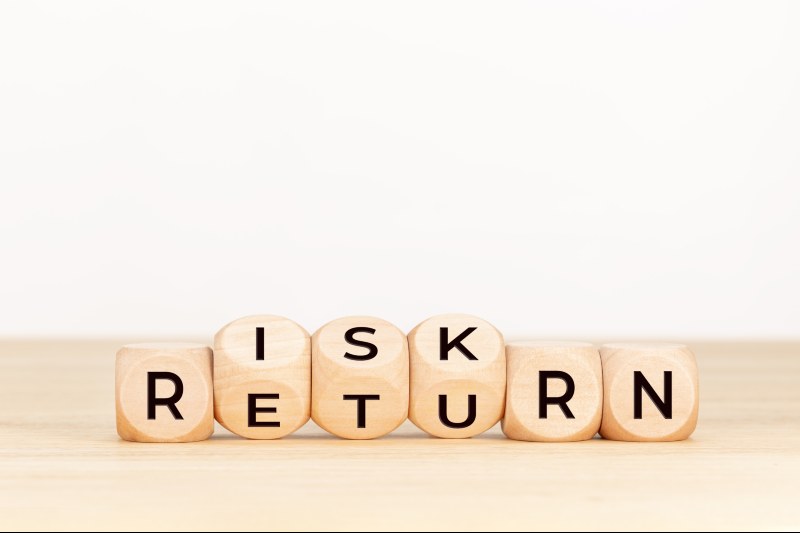Here at Summit Financial, we believe the largest risk to a retirement income plan is the Sequence of Returns Risk. In this month’s blog, we will be discussing specifically what this risk is, the affects it can have on retirement, and how we can manage this risk exposure.
What is the Sequence of Returns Risk?
First, what is the Sequence of Returns Risk? Let us break it down word-by-word.
- Sequence – the following of one thing after another; succession.
- Returns – the gain realized on an exchange of goods; a yield or profit
- Risk – the hazard or chance of loss.
Core Concept of Sequence of Returns Risk
When we put these definitions together, the Sequence of Returns Risk is the chance of loss due to an unfavorable order of market performance. In other words, the order of your investment returns has an impact on your retirement plan. This risk is most prevalent in the early years of retirement.
Why Sequence of Returns Risk Matters in Retirement
When a retiree experiences a negative year(s) in the market, they will still need to withdraw their income needs, but these withdrawals are now a larger percentage of their account due to the recent market losses. Because they are withdrawing larger percentages of their assets, this will cause retirement savings to be depleted at a much faster rate. If you are requiring $5,000 per year in income and you have $100,000 total assets. That is a 5% withdrawal rate. If your account suddenly drops to $50,000 then you will be required to withdraw 10% of your account to yield the same $5,000 of income.
Let’s use an example for your retirement income and compare it to mowing the lawn. You have to mow your lawn every week. Every week the lawn grows and you have clippings. Let’s just pretend that you live on the grass clippings, that’s your monthly income you live on. Well, let’s say that you have an insect, like grubs, ruin the roots, so you don’t have as much grass growing and therefore you don’t have as many grass clippings to live on.
Or let’s say there’s a drought and half your lawn dies. Well, there isn’t as much grass growing, so to get the same amount of clippings, you have to start digging deeper, and you hurt the roots. Damaged roots will hinder future growth of the clippings. This is similar to how a damaged investment account will struggle to provide monthly income and will lose growth potential.
Visualizing the Impact of Sequence of Returns
Next, let’s take a look at the numbers to see how this may quantitatively affect retirement. During the accumulation phase of retirement savings, The Sequence of Returns Risk does not exist. While saving for retirement, the largest factor is simply the average annual growth. Please see the accumulation example below and notice how the ending numbers are the same for each scenario, regardless of the order of their investment performance.

However, during the distribution phase, the order of investment returns is a huge factor of retirement success. Like we mentioned above, when there is a down year in the market, retirees are forced to withdraw larger percentages of their retirement accounts to provide a consistent level of income. When these large percentage withdrawals occur early in retirement, it puts additional stress on the retirement savings for future income needs. Please see the distribution example below and notice the vast difference in ending results.

Managing the Sequence of Returns Risk with a Preservation Phase
So, what is the best way to manage this risk? We believe it is best handled by adding a phase between accumulation and distribution. For those assets that are used for income within the next 5-10 years, we believe those funds are currently in the preservation phase. By reducing investment risk for upcoming income generating assets, we reduce the affect of the Sequence of Returns Risk. Yes, by reducing risk, we are also reducing the potential reward within those investments as well. However, we believe the trade-off is more than acceptable.
An investor’s risk tolerance generally tends to follow this process anyways. Those who are younger, tend to be more aggressive investors. Those that are closer to retirement, tend to invest more conservatively. This is because they do not want to see their life savings diminish after all their hard work trying to save enough.
Even though many investors do not know it, by reducing risk as they get older, they are effectively reducing the Sequence of Returns Risk. However, we believe this concept should be further amplified and concentrated on the income assets for the next 5-10 years. Anything required beyond that time horizon can still be invested more aggressively for more potential reward and then reduce risk as those assets become needed for income later in retirement.
Financial Planning and Review Meeting
If you have any questions about interest rates, tax strategies, our 401(k) recommendation service, or other general questions, please give our office a call at (586) 226-2100. Please feel free to forward this commentary to a friend, family member, or co-worker. If you have had any changes to your income, job, family, health insurance, risk tolerance, or overall financial situation, please give us a call so we can discuss it.
We hope you learned something today. If you have any feedback or suggestions, we would love to hear them.
Zachary A. Bachner, CFP®
with contributions from Robert Wink, Kenneth Wink, and James Wink


